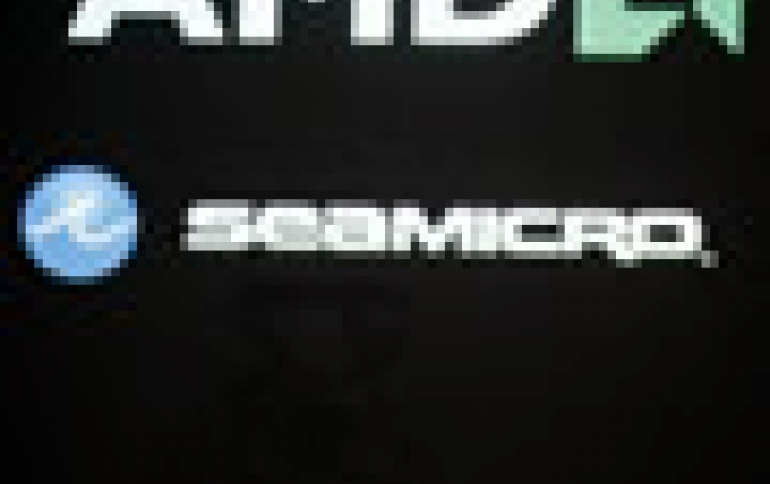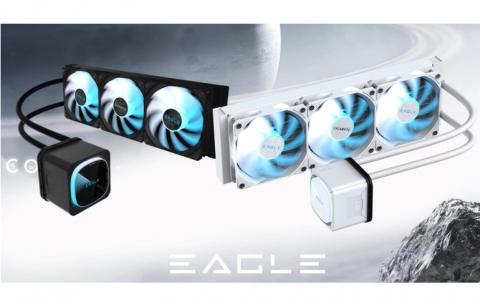
AMD Accelerates Server Strategy With SeaMicro Acquisition
AMD announced a definitive agreement to acquire SeaMicro, a company specilizing in energy-efficient, high-bandwidth microservers, for approximately $334 million.
Through the acquisition of SeaMicro, AMD will be accelerating its strategy to deliver disruptive server technology to its OEM customers serving cloud-centric data centers. With SeaMicro's fabric technology and system-level design capabilities, AMD will be able to offer server building blocks tuned for the workloads such as dynamic web content, social networking, search and video.
AMD plans to offer the first AMD Opteron processor-based solutions that combine AMD and SeaMicro technology in the second half of 2012. AMD also added that it would remain committed to its traditional server business, and will continue to focus and invest in this area.
"By acquiring SeaMicro, we are accelerating AMD's transformation into an agile, disruptive innovator capable of staking a data center leadership position," said Rory Read, president and CEO, AMD. "SeaMicro is a pioneer in low-power server technology. The unmatched combination of AMD?s processing capabilities, SeaMicro's system and fabric technology, and our ambidextrous technology approach uniquely positions AMD with a compelling, differentiated position to attack the fastest growing segment of the server market."
SeaMicro technologies offer advantages in large data center and cloud environments. Cloud data centers are projected to be the fastest growing segment of the server market through 2015, according to IDC. Current systems featuring SeaMicro technology typically use one quarter the power and take one sixth the space of traditional servers with the same compute performance, yet deliver up to 12 times the bandwidth per core.
Foremost among SeaMicro's technologies is their supercompute fabric, which connects thousands of processor cores, memory, storage and input/output traffic. SeaMicro's fabric supports multiple processor instruction sets. SeaMicro solutions are currently deployed in multiple sites across the world. AMD said it would continue to support all current SeaMicro customers.
When you look at the IP that AMD has at its disposal, large cores like "Bulldozer" and the upcoming "Piledriver"; smaller, energy efficient cores like "Bobcat" and the upcoming "Jaguar"; as well as leading GPU technology, it all means that AMD has the ability to build a variety of CPU and APU products that can be integrated into servers. And the fabric solution from SeaMicro helps AMD tie all of these pieces together.
AMD will fund the cash portion of the acquisition with existing cash reserves.
AMD plans to offer the first AMD Opteron processor-based solutions that combine AMD and SeaMicro technology in the second half of 2012. AMD also added that it would remain committed to its traditional server business, and will continue to focus and invest in this area.
"By acquiring SeaMicro, we are accelerating AMD's transformation into an agile, disruptive innovator capable of staking a data center leadership position," said Rory Read, president and CEO, AMD. "SeaMicro is a pioneer in low-power server technology. The unmatched combination of AMD?s processing capabilities, SeaMicro's system and fabric technology, and our ambidextrous technology approach uniquely positions AMD with a compelling, differentiated position to attack the fastest growing segment of the server market."
SeaMicro technologies offer advantages in large data center and cloud environments. Cloud data centers are projected to be the fastest growing segment of the server market through 2015, according to IDC. Current systems featuring SeaMicro technology typically use one quarter the power and take one sixth the space of traditional servers with the same compute performance, yet deliver up to 12 times the bandwidth per core.
Foremost among SeaMicro's technologies is their supercompute fabric, which connects thousands of processor cores, memory, storage and input/output traffic. SeaMicro's fabric supports multiple processor instruction sets. SeaMicro solutions are currently deployed in multiple sites across the world. AMD said it would continue to support all current SeaMicro customers.
When you look at the IP that AMD has at its disposal, large cores like "Bulldozer" and the upcoming "Piledriver"; smaller, energy efficient cores like "Bobcat" and the upcoming "Jaguar"; as well as leading GPU technology, it all means that AMD has the ability to build a variety of CPU and APU products that can be integrated into servers. And the fabric solution from SeaMicro helps AMD tie all of these pieces together.
AMD will fund the cash portion of the acquisition with existing cash reserves.





















